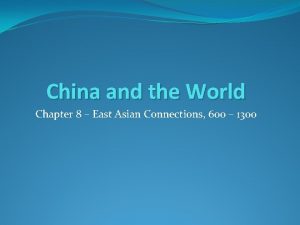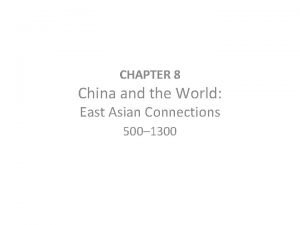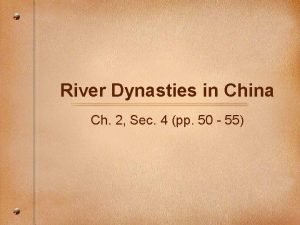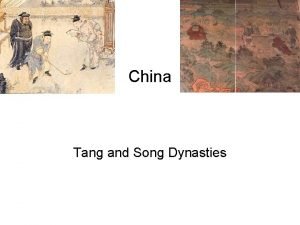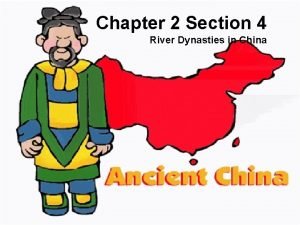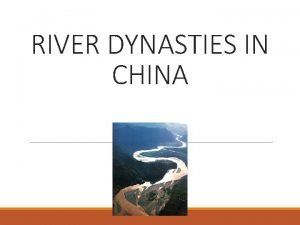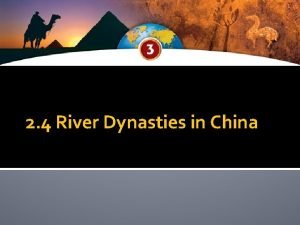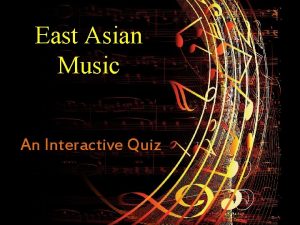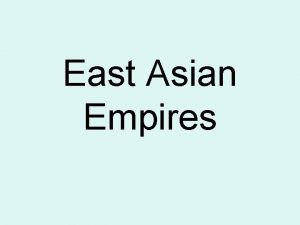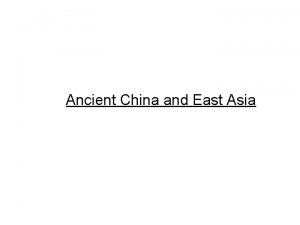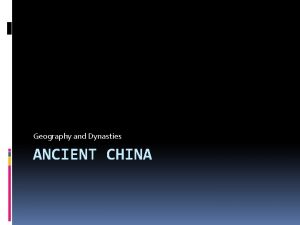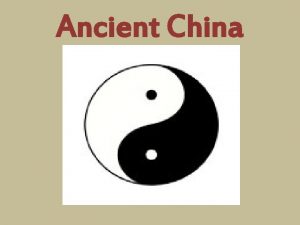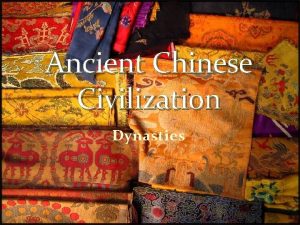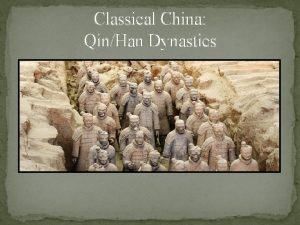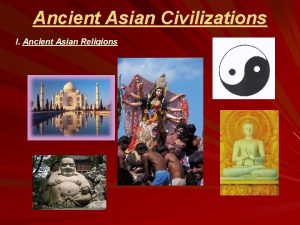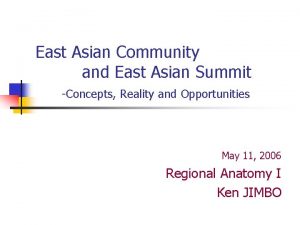Ancient Dynasties of China East Asian Studies Unit











- Slides: 11

Ancient Dynasties of China East Asian Studies Unit One Mitchell

Founding Chinese States � 3 Sovereigns & 5 Emperors (c. 2852 -c. 2070 BC) • Semi-mythological rulers & culture heroes responsible for creating man and imparting essential skills � Xia (“shy”) Dynasty (c. 2070 -c. 1600 BC) • First dynasty described in ancient historical chronicles • Established by the legendary Yu the Great �Legend states he successfully united the people in order to stop the floods by building canals for 13 years. • Strengthened his power, increased wealth of Xia clan • Reliability of information about Xia dynasty has been questioned due to a lack of primary sources and tradition of speculation among ancient and imperial historians.

Shang (“shong”) Dynasty (1600 -1046 BC) � Yellow River Civilization � Technological Advances • Pictographic writing system • Stone ploughs, spades, sickles to improve farming yields • Bronze Age vessels � Political Structures • Dynasty had over 50 kings �Head priest, leader of military aristocracy, head of economy • 5 -7 Capital Cities �Urban capital would move due to shifts in power

Shang Dynasty (1600 -1046 BC) � The Oracle Bones • Inscriptions on turtle shells & ox bones have provided key insight on politics, economy, and religion of Shang • Over 20, 000 artifacts have been recovered • Questions written on bones, bones would be fired, cracks would be interpreted to determine the future • Countless oracle bones lost when used as “dragon bones”

Shang Dynasty (1600 -1046 BC) � Religion within the Shang • Worshiped “Shang Ti” or “Di” (The Lord on High) �Supreme God above all others, could command the elements • Royal ancestors were viewed to intervene with distant Di �Could also cast curses, send dreams, assist in battles �Wishes of ancestors determined through burning of oracle bones �Required extensive sacrifices to avoid disasters (floods, drought) • Human sacrifice very common, often slaves or P. O. W. s

Zhou (“jyoe”) Dynasty (1050 -256 BC) � Conquering of the Shang • “Noble warriors supported by Heaven defeat decadent Shang court led by evil King” • 3 Conquering Rulers of Zhou �King Wen expanded domain �King Wu conquered the Shang �Duke of Zhou consolidated power • “The Mandate of Heaven” �Spiritual/Political theory used by early Zhou rulers to justify power �Heaven gives a king mandate to rule only as long as he rules in the interests of the people. If not…

Western Zhou Dynasty � Zhou Political Structure • King head of royalty, nobility �Still head of ancestor worship, but less sacrifice & oracle bones • Sent trusted relatives to build garrisons in conquered lands • Quasi-Feudal system develops �Zhou society highly aristocratic �When king bestowed land, he often included labor to work it �Slave/serf labor = noble wealth �Manors divided into nine squares, king held middle for emergencies �Warrior class develops over time

Eastern Zhou Dynasty �A Transition in Power • Over time, lords trade & sell feudal land thus gaining power from the Zhou kings • Succession to throne became major issue due to concubines �Kings would occasionally name son from concubine as heir over eldest son from wife �Excluded sons would often ally w/ neighboring armies, lead warfare �King Yu of Ji family made such a move, fell to wife’s father, power moved from “West” to “East”

Eastern Zhou Dynasty � Spring & Autumn Period • Lasted from 770 to 476 BC • Some vassal states grow in power, royal authority shrinks • Small feudal states absorbed by larger, stronger ones • Small-scale war, annexation � 36 kings dead, 52 states destroyed • Competition among low-level nobles to advise rulers brings rise of intellectual flowering �Taoism, Confucianism, Legalism all trace roots to this time period

Eastern Zhou Dynasty � Warring States Period • Spanned from 475 to 221 BC • Long-term wars: 7 Kingdoms �Qi, Chu, Yan, Han, Zhao, Wei, Qin • States focus on reform within realm, attack outside turf �Qin reforms the most quickly (see “legalism”), emerges as the mostpowerful feudal state � 256 BC: Qin attacks and defeats all armies in Eastern Zhou � 221 BC: China becomes united under the Qin, ending Warring States Period

Eastern Zhou Dynasty � Legalism “School of Law” • One of the major philosophical movements of warring states �Utilitarian political philosophy, fails to address higher questions of nature & meaning of life • Han Fei Zi proposed leader should use three tools: �Fa (law): laws should be fair, equal, just, predictable �Shu (method): rulers need secrets, bureaucracy to protect power �Shi (legitimacy): the position, not the ruler, holds true power
 China and the world east asian connections
China and the world east asian connections Chapter 8 china and the world east asian connections
Chapter 8 china and the world east asian connections Ancient india vs ancient china
Ancient india vs ancient china Chapter 2 section 4 river dynasties in china
Chapter 2 section 4 river dynasties in china Ming and qing dynasty venn diagram
Ming and qing dynasty venn diagram Social classes in the han dynasty
Social classes in the han dynasty River dynasties in china
River dynasties in china How did the sui and tang dynasties reunite china
How did the sui and tang dynasties reunite china River dynasties in china
River dynasties in china Japanese large hanging barrel drum
Japanese large hanging barrel drum South east asian ministers of education organization
South east asian ministers of education organization Relative location of southwest asia
Relative location of southwest asia
